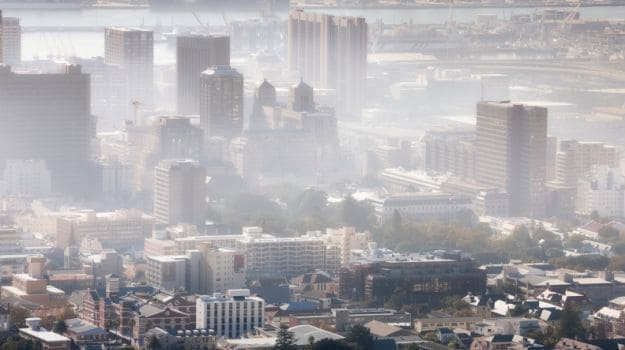New data released by the organization on Thursday detailed how 4 in 5 residents of cities with reliable measurements face levels of particulate air pollution that exceed what the WHO recommends. While the problem is playing out in cities around the world, poorer countries are suffering most.
The WHO said 98 percent of urban areas in "low- and middle-income countries" with populations of more than 100,000 fall shy of the group's air-quality standards.
"Urban air pollution continues to rise at an alarming rate, wreaking havoc on human health," Maria Neira, director of WHO's department of public health, environment and social determinants of health, said in a statement.
The figures released Thursday were part of an updated WHO global database of air pollution for cities and smaller human settlements across the world. The database now covers 3,000 cities, towns and villages in 103 countries, listing average annual levels of fine particulate matter in the air. This includes tiny particles less than 2.5 micrometers in size, known as PM2.5, which are thought to be the most deadly because they can find their way deep into a person's lungs.
The alarming result: Eighty percent of people in cities and towns whose air quality is actually monitored are breathing air containing fine particulates at concentrations higher than the WHO's recommended level. Air pollution in urban areas as a whole was 8 percent worse in 2013 than it was in 2008. (Not all places have good enough data available, especially in much of Africa).
Most of all, the WHO data underscores a vast air-pollution gap between rich countries such as the United States - where large numbers of cities are averaging at or below 10 micrograms per cubic meter of PM2.5, the WHO's designated guideline level - and poorer developing countries. Several cities and towns in India and China, for instance, had average annual levels well over 100 micrograms per cubic meter for PM2.5, according to the new database.
Among global megacities - which WHO defines as any city that's home to more than 14 million people - the Indian capital of Delhi received the worst ranking, with PM10 levels of 229, representing larger particles than PM2.5 (where levels stood at 122).
"The WHO data illustrates just how immediate the problem of air pollution is and that we need radical and rapid action to tackle the twin issues of air pollution, which is killing urban citizens, and climate change, which threatens people's lives today and in the future," said Mark Watts, executive director of the C40 Cities Climate Leadership Group, which focuses on local ways of cutting greenhouse gas emissions.
Particulate air pollution in cities emerges from many sources, ranging from smokestacks to automotive tailpipes. Public health officials say that as urban air quality declines, people living in cities face increased risks of heart disease, stroke, lung cancer and acute respiratory illnesses, such as asthma.
There are other worries. In a study published earlier this year, researchers found that air pollution in the United States could be contributing to thousands of premature births each year. That study and others are part of a growing body of evidence about the dangers that air pollution poses to human health. A study published last September in the journal Nature concluded that poor air quality contributes to more than 3 million premature deaths around the globe each year.
Exposure to minuscule, toxic particles in the air is the central concern."They're so small that they can actually get deep into the lungs, into the alveoli, and get into your bloodstream," George Thurston, a professor of environmental medicine and population health at New York University's School of Medicine, said when that study was released.
The news isn't all grim, though.
Recently published research found that despite growing air-pollution levels in many places, in the vast majority of cities around the world, it's still more beneficial to bike, walk and enjoy the outdoors than to remain clustered inside, regardless of the pollution in the air.(c) 2016, The Washington Post
(This story has not been edited by NDTV staff and is auto-generated from a syndicated feed.)







